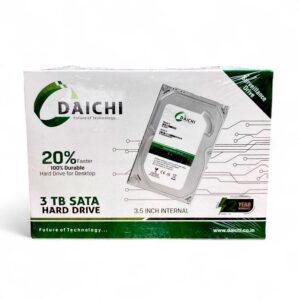Unlock the Power of Precision with a Handheld Metal Laser Welder: Your Ultimate Guide to Versatility and Efficiency
A handheld metal laser welder is a cutting-edge tool designed to provide high-quality, precision welding in a variety of industries. Whether you’re working with intricate parts for the automotive sector, delicate jewelry, or repairing metal equipment, these welders offer unparalleled convenience, speed, and accuracy. In this guide, we’ll explore everything you need to know about handheld metal laser welders, including their benefits, how they work, applications, and tips for choosing the right one for your needs.
What is a Handheld Metal Laser Welder?
A handheld metal laser welder is a portable welding device that uses a laser beam to melt and fuse metal surfaces together. Unlike traditional welding methods, which rely on heat from electrical arcs or gas flames, laser welding utilizes focused light energy to create precise, high-strength joints. This innovative technology has revolutionized welding by offering greater flexibility, minimal thermal distortion, and reduced material waste.
Key Features of a Handheld Laser Welder:
- Portability: The handheld design allows for easy maneuvering and accessibility in tight or hard-to-reach areas.
- Precision: Laser welding ensures high-quality welds with minimal distortion, making it ideal for applications that require precision.
- Efficiency: These machines are designed for fast, high-output welding, improving productivity and turnaround times.
- Minimal Heat Affected Zone (HAZ): The laser beam creates a narrow HAZ, preventing thermal damage to surrounding materials.
How Does a Handheld Metal Laser Welder Work?
Handheld laser welders work by focusing a high-energy laser beam onto a metal workpiece. The laser energy is absorbed by the metal, raising its temperature to the melting point. As the metal melts, it fuses with the adjacent material to form a strong, durable bond. The laser welder allows for fine control over the welding process, including beam intensity, focus, and welding speed, resulting in precise, repeatable welds.
The Laser Welding Process:
- Laser Generation: A fiber laser or solid-state laser generates the laser beam.
- Beam Delivery: The laser beam is delivered through fiber optics to the handheld welding gun.
- Focusing the Laser: A lens system focuses the laser beam onto the weld area.
- Melting and Fusion: The focused laser energy melts the material, causing it to fuse with the adjacent surface.
- Cooling: As the metal cools, it solidifies, forming a strong, reliable weld.
Benefits of Using a Handheld Metal Laser Welder
1. High Precision
Handheld laser welders provide an incredibly high level of precision compared to traditional welding methods. The laser beam can be focused to a very fine point, allowing for detailed work on small components and intricate designs. This makes laser welding ideal for applications like jewelry, electronics, and thin metal sheets.
2. Speed and Efficiency
Laser welding is fast, reducing the amount of time required for each weld. This increases overall productivity, especially in high-demand production environments. Additionally, the speed of the process helps reduce the cooling time, which means quicker processing times and less downtime.
3. Minimal Distortion and Heat Affected Zone
The focused laser beam minimizes the heat-affected zone (HAZ), ensuring that the surrounding material experiences less thermal damage. This is particularly beneficial for materials that are sensitive to heat and those that require precise, clean welds with minimal post-welding work.
4. No Need for Consumables
Unlike traditional welding methods that often require filler materials, a handheld laser welder generally does not need any consumables, saving on material costs. The efficiency of the welding process means that less material is wasted, making it both cost-effective and environmentally friendly.
5. Portability
Handheld laser welders are designed to be lightweight and portable, enabling users to perform welding tasks in places where traditional machines cannot reach. Whether you’re repairing small metal parts, conducting maintenance work, or working on-site, the mobility of handheld welders is a significant advantage.
6. Versatility
These welders can be used with a wide range of materials, including stainless steel, aluminum, brass, and even precious metals like gold and silver. Their versatility makes them suitable for industries ranging from automotive manufacturing to jewelry crafting and even medical device production.
Key Applications of Handheld Metal Laser Welders
Handheld metal laser welders are used in various industries due to their precision, efficiency, and versatility. Below are some of the primary applications:
| Industry | Applications |
|---|---|
| Automotive | Repairing car body panels, exhaust systems, and components. |
| Aerospace | Welding lightweight components for aircraft and satellites. |
| Jewelry | Fine welding for rings, necklaces, and other intricate jewelry pieces. |
| Electronics | Micro-welding for delicate electronic components and circuit boards. |
| Medical Devices | Welding medical instruments and devices with high precision. |
| Heavy Machinery | Repairing industrial equipment and parts. |
1. Automotive
Handheld metal laser welders are particularly useful in the automotive industry, where precision and speed are crucial. These welders are used for repairing car body panels, exhaust systems, and various automotive parts that require fine, accurate welds.
2. Aerospace
Aerospace manufacturers rely on laser welding to create lightweight, strong components for aircraft and spacecraft. The high precision and low thermal distortion of handheld laser welders make them perfect for welding materials like titanium and aluminum used in aerospace applications.
3. Jewelry
In jewelry manufacturing, a handheld metal laser welder is invaluable for creating fine, detailed pieces. The ability to perform precise welds on small components allows jewelers to repair delicate items like rings and necklaces without damaging the surrounding metal or gemstones.
4. Electronics
Electronics manufacturers use handheld laser welders to fuse tiny components together, such as microchips and circuit boards. The precision of laser welding ensures minimal heat damage to sensitive electronic parts, improving the longevity and reliability of the products.
5. Medical Devices
In the medical device industry, handheld laser welders are used for creating strong, sterile welds in medical instruments and implants. The clean, precise welds made by laser technology are ideal for applications where both strength and cleanliness are paramount.
6. Heavy Machinery
Heavy machinery repair often requires welding large metal parts. Handheld laser welders offer the ability to quickly and efficiently repair industrial equipment, reducing downtime and ensuring the reliability of heavy-duty machinery.
What to Consider When Choosing a Handheld Metal Laser Welder
When selecting the right handheld laser welder for your needs, consider the following factors:
1. Power Output
The power output of the laser welder determines the types of metals and thicknesses it can effectively weld. Higher-powered machines are suitable for thicker metals, while lower-powered machines are ideal for finer materials.
2. Welding Speed
Welding speed is crucial for efficiency, especially in high-demand environments. Choose a welder with adjustable settings to optimize speed based on the material and application.
3. Portability
If you need to move your welder between different workstations or take it to job sites, consider a lightweight and compact model that offers easy portability without compromising on performance.
4. Cooling System
A reliable cooling system is essential for maintaining optimal welding performance and preventing overheating. Look for models with efficient cooling systems that keep the machine operating smoothly for longer periods.
5. Ease of Use
Choose a model with user-friendly controls, intuitive settings, and minimal maintenance requirements. This ensures that operators can quickly adapt to the equipment and reduce the learning curve.
FAQs About Handheld Metal Laser Welders
1. What is the difference between a handheld laser welder and a traditional MIG or TIG welder?
Handheld laser welders offer more precision and less thermal distortion compared to MIG or TIG welders. Additionally, laser welders require no filler material, making them more efficient and cost-effective.
2. Can handheld metal laser welders be used on all types of metals?
Handheld laser welders can be used on a wide variety of metals, including stainless steel, aluminum, copper, brass, and even precious metals like gold and silver.
3. Are handheld laser welders safe to use?
Yes, handheld laser welders are safe to use when proper safety precautions are followed. It is important to wear protective gear such as goggles, gloves, and proper clothing to protect from laser exposure and heat.
4. How long do handheld metal laser welders last?
With proper care and maintenance, a handheld laser welder can last for several years. Regular cleaning, checking the cooling system, and replacing worn-out components will extend the life of the machine.
5. What are the advantages of using a handheld laser welder over traditional welding methods?
Handheld laser welders offer advantages such as higher precision, reduced heat-affected zones, minimal post-weld finishing, and no need for filler materials. Additionally, they are portable, fast, and efficient.
By understanding the core benefits, features, and applications of handheld metal laser welders, you can make an informed decision about how this technology can elevate your business. Whether you’re in automotive repair, aerospace, or jewelry production, a handheld laser welder can significantly enhance the quality and efficiency of your welding processes.













